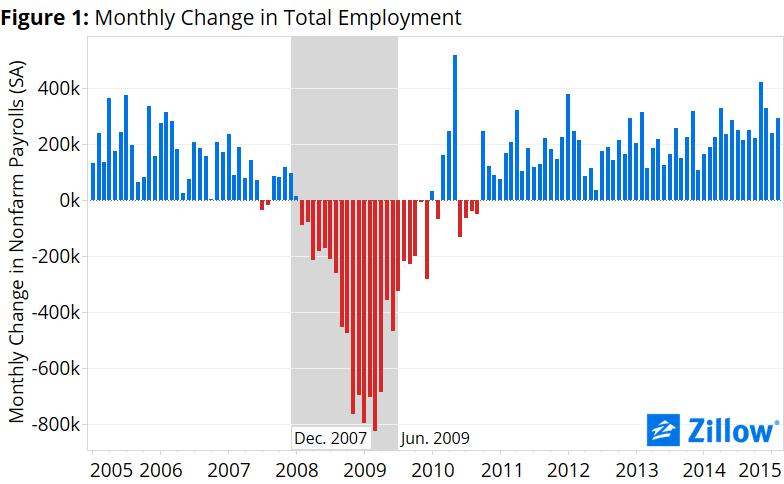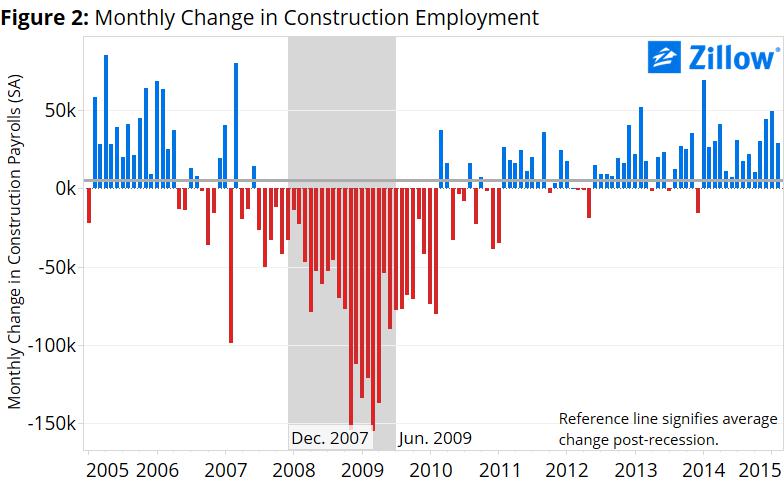- February marked the 12th month in a row the U.S. economy has added over 200,000 jobs, helping the unemployment rate to fall to 5.5 percent nationwide.
- Over the past four months, the construction sector has added 38,000 jobs per month, on average, which is well above the post-recession average of only 5,000 per month.
 The scars of the housing crisis are fading, and we are transitioning from a housing market dominated by recession-era legacies including high negative equity, low inventory and high foreclosures, to one increasingly driven by fundamentals. And what could be more fundamental than having a job?
The scars of the housing crisis are fading, and we are transitioning from a housing market dominated by recession-era legacies including high negative equity, low inventory and high foreclosures, to one increasingly driven by fundamentals. And what could be more fundamental than having a job?
The most recent employment report was the latest in a string of robust jobs data, offering further proof that the employment picture is definitely on the upswing. Most observers expected the U.S. economy to add roughly 250,000 jobs last month. Reality handily trumped those expectations, with the economy adding a total of 295,000 jobs (seasonally adjusted[1]). February marked the 12th month in a row the U.S. economy has added over 200,000 jobs, helping the unemployment rate to fall to 5.5 percent nationwide (figure 1).
This is welcome news for the housing market, in particular, for any number of obvious reasons, not the least of which is that when people get jobs, they’re more apt and able to buy a home or to move into a newer, nicer home. But especially encouraging are signs of improvement in construction-related jobs.
 As we’ve pointed out, employment related to construction has been slower to pick up than the rest of the economy. But over the last four months there has been particularly strong employment growth in the construction sector, adding 38,000 jobs per month, on average, compared to a post-recession average of only 5,000 jobs per month (figure 2).
As we’ve pointed out, employment related to construction has been slower to pick up than the rest of the economy. But over the last four months there has been particularly strong employment growth in the construction sector, adding 38,000 jobs per month, on average, compared to a post-recession average of only 5,000 jobs per month (figure 2).
At this pace, there is still a ways to go before construction-related employment returns to pre-recession levels. But, after years in which we were not, we are clearly headed in the right direction now and things continue to look up.
[1] There has been a recent debate on the virtue of seasonal adjustment. See here for example: http://www.wsj.com/articles/daniel-quinn-mills-seasonally-adjusted-jobs-numbers-offer-cold-comfort-1425600846. At Zillow Research, we feel that seasonally adjusting is the best way to account for recurring patterns that can obscure changes in the underlying data.